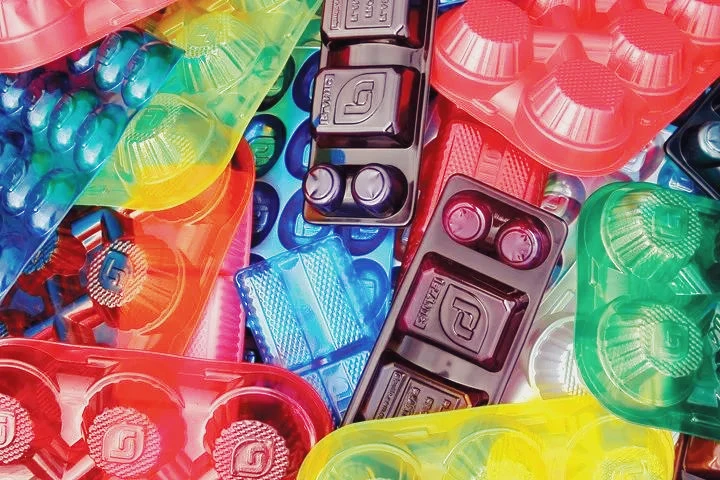
Close collaboration between compounders and machine builders often leads to new compounds, including biopolymers. For Biopolymer Compounding on Twin Screw Extruders, ensure your equipment supplier offers lab facilities to support R&D.
Many new international players have emerged in the field of biopolymers, using new materials and many new formulations. Co-rotating twin-screw extruders provide excellent material compounding capabilities for all biopolymers. Regardless of the formulation, you should consider your equipment supplier as a development partner to achieve your goals regarding melt and extrusion quality, productivity, and other parameters. Ensure your equipment supplier has the facilities and expertise to help you test material formulations and improve your process.
Global bioplastics capacity is expected to grow to 4.8 billion pounds by 2024, as extrusion equipment makers and brand owners steadily turn their attention to these “green” materials. Here are some key processing considerations you need to know if you are looking to provide compounds to meet this need.
Some extruders are designed with extreme flexibility. You can buy long extruders with 48:1 or 52:1 L/D and they have multiple options for venting and feeding positions.
Because biodegradable plastics are a rapidly developing industry, there are often new ideas, new or improved raw materials and additives. It is much easier to open or close an available vent location, or add or remove a side feeder from an available location, rather than buying a new barrel or expanding an extruder after the initial capital purchase.
Plan for at least one atmospheric vent (sometimes two) and at least one vacuum vent (sometimes two). Biopolymers are often hygroscopic and require careful handling prior to processing. Placing a vent early in the extrusion process is effective in minimizing hydrolysis of the biopolymer and avoiding pre-drying of the material.
A vacuum exhaust port is required. Don’t think of the vacuum system as a non-essential add-on, it’s an integral part of the extrusion process and often the difference between making a quality product or not. A well-designed vacuum system also addresses the often corrosive nature of biopolymer volatiles, which can pay for itself by reducing maintenance and downtime and increasing production efficiency.
Here’s an optimized version of your text with a focus on brevity and the keyword integration you requested:
Biopolymers degrade quickly with excessive heat or shear. Shear exposure depends on extruder screw speed and screw-barrel gap. For efficient Biopolymer Compounding on Twin Screw Extruders, run at the lowest screw speed possible until torque exceeds 90% or volume limits are reached.
Volume limits can be managed by venting air and moisture and by positioning kneading blocks or counter-screw elements far downstream. Avoid high torque by using a long, gentle mixing zone. A stable feeder minimizes torque fluctuations, enabling higher average torque.
Co-rotating twin screw extruders, despite effective mixing, are only 8-15% more efficient than pumps. High extruder outlet pressure may increase melt temperature, also causing vent flow near the outlet.
To reduce outlet pressure, increase the die hole diameter, enlarge the filter screen mesh, or—when underwater pelletizing—raise water and die temperatures. Delivery-pitched threaded elements are the most efficient pumping components.
Adding a melt pump between the extruder outlet and the die improves efficiency by 25-35%. The pump reduces melt temperature rise, conserves extruder power, and stabilizes the extrudate. A melt pump cost is often justified by increased Biopolymer Compounding on Twin Screw Extruders output.
Biopolymers degrade faster than most petroleum-based polymers. If the extruder is to stand for more than 1 to 2 hours, it is strongly recommended to lower the barrel heating or turn off the heating.
If the extruder will remain heated for extended periods of time without running it, clean the extruder with a low-cost heat-stable polymer with a slightly higher melt viscosity than bio-resin. If the cleaning material is too viscous, it may appear as contamination within a few hours of restarting production.

Here the biodegradable cookie tray is extruded and thermoformed by PHA
We broadly divide biopolymeric compounds into three categories:
- Starch-Based Polymer Compounds;
- Bioresin compounds containing resins such as PHA, PLA, or PHB;
- Biopolymer compound blends, are defined as compounds containing two or more bioresins, starch-based polymers, and/or petroleum-based polymers).
Content source: PTonline, author: Dean Elliott
Disclaimer: (part of) the data, charts, or other content in this article are from the Internet or other publicly published materials, and are only for readers’ reference, communication, and learning, and do not involve any commercial behavior or purpose. The copyright belongs to the original author and source. If the copyright owner believes that this article is suspected of infringement or other problems, please contact us and deal with it in a timely manner.

